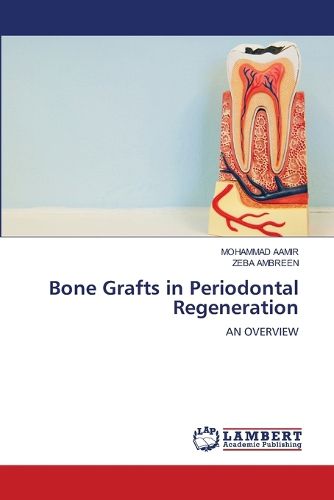Readings Newsletter
Become a Readings Member to make your shopping experience even easier.
Sign in or sign up for free!
You’re not far away from qualifying for FREE standard shipping within Australia
You’ve qualified for FREE standard shipping within Australia
The cart is loading…






The ultimate goal in periodontal therapy is creation of an environment that is conducive to maintaining patient's dentition in health, comfort, and function. Bone replacement grafts are widely used to promote bone formation and periodontal regeneration. Conventional surgical approaches, such as open flap debridement, provide critical access to evaluate and detoxify root surfaces as well as establish improved periodontal form and architecture; however, these surgical techniques offer only limited potential in restoring or reconstituting component periodontal tissues.Bone grafting materials function, in part, as structural scaffolds and matrices for attachment and proliferation of anchorage-dependent osteoblasts. Multiple classification systems have been used to organize bone replacement grafts, which commonly include source (e.g., allograft), chemical composition (e.g., calcium phosphate) and physical properties (e.g., ceramic). Advances in material sciences, however, have increasingly blurred such boundaries between types of bone replacement grafts.
$9.00 standard shipping within Australia
FREE standard shipping within Australia for orders over $100.00
Express & International shipping calculated at checkout
The ultimate goal in periodontal therapy is creation of an environment that is conducive to maintaining patient's dentition in health, comfort, and function. Bone replacement grafts are widely used to promote bone formation and periodontal regeneration. Conventional surgical approaches, such as open flap debridement, provide critical access to evaluate and detoxify root surfaces as well as establish improved periodontal form and architecture; however, these surgical techniques offer only limited potential in restoring or reconstituting component periodontal tissues.Bone grafting materials function, in part, as structural scaffolds and matrices for attachment and proliferation of anchorage-dependent osteoblasts. Multiple classification systems have been used to organize bone replacement grafts, which commonly include source (e.g., allograft), chemical composition (e.g., calcium phosphate) and physical properties (e.g., ceramic). Advances in material sciences, however, have increasingly blurred such boundaries between types of bone replacement grafts.